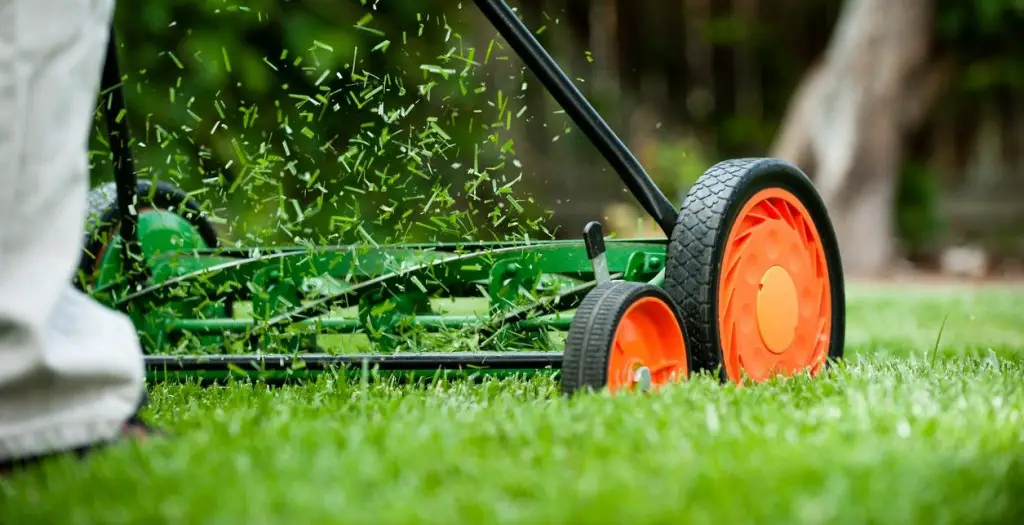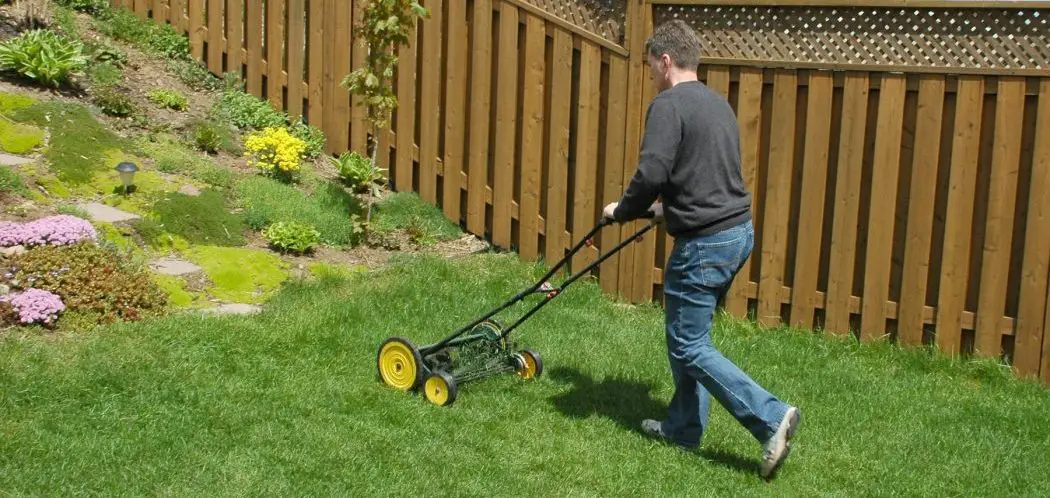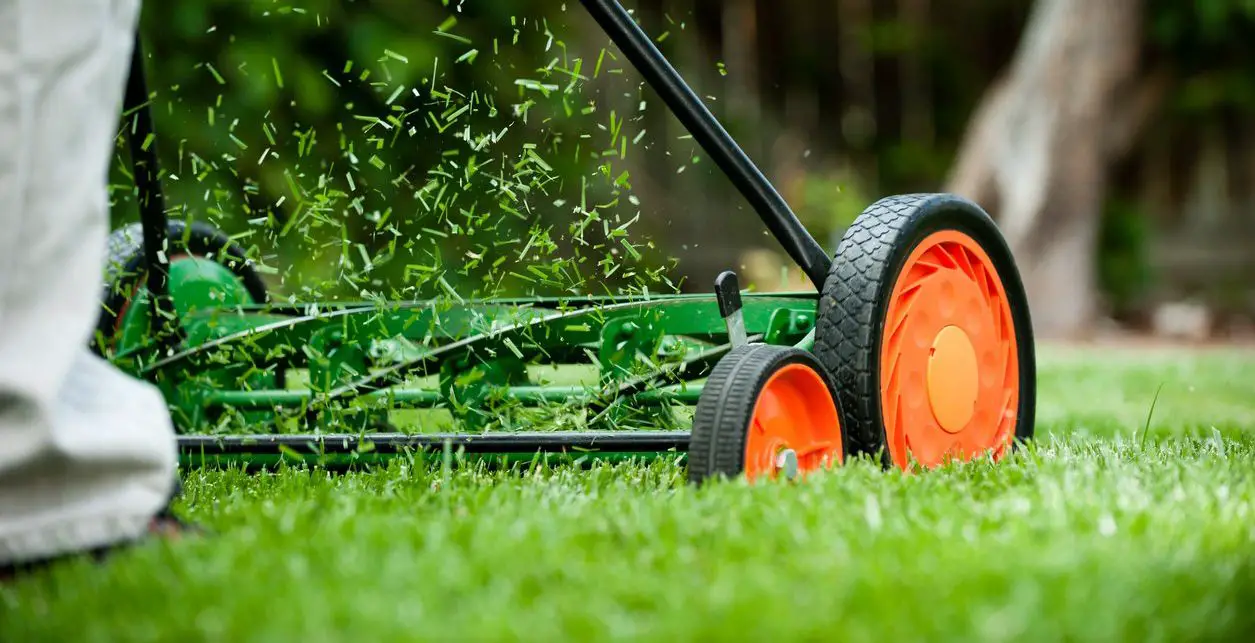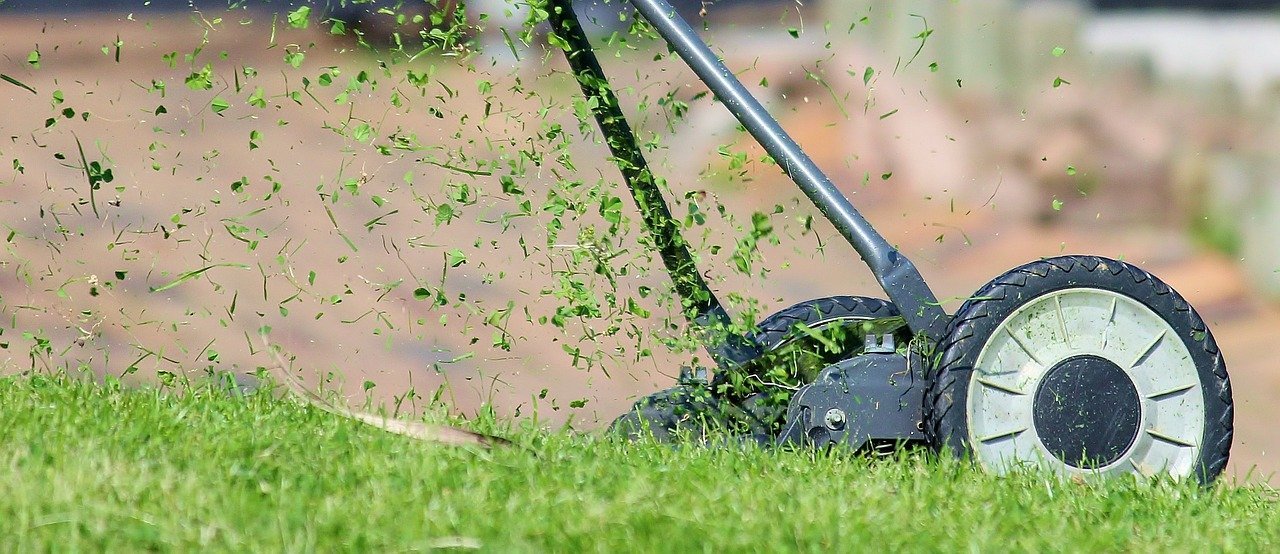Reel mowers produce an impeccable, golf-course quality cut lawn. But how does that scissor-like cutting action impact the underlying grass plants compared to a traditional rotary mower? What are the potential benefits or drawbacks of reel mowing for overall lawn vigor and performance?
This article takes an in-depth look at the myriad effects of reel mowing on key aspects of lawn growth and health. Read on to understand the plant health tradeoffs to consider when deciding between reel versus rotary mowing.
When performed properly, reel mowing provides tangible plant health benefits over rotary mowing, including cleaner cuts, improved photosynthesis, encouraged rooting, and denser growth. But excessive reel mowing can scalp and stress grass. Adjusting heights for conditions and growth stage optimizes effects.
An Introduction to Reel Mower Technology
Before diving into the impacts, let’s briefly overview how reel mowers differ from standard rotary mowers in their cutting mechanics.
Rotary Mower Cutting Action
Gasoline-powered rotary mowers utilize a high-speed horizontal spinning steel blade to cut grass. The engine spins the blade at velocities ranging from 2000-3000 RPM. At these high speeds, the rotating blade develops tremendous momentum.
As the fast rotational movement of the blade impacts grass leaves, it shreds and tears them apart violently using sheer momentum rather than slicing cleanly. This imparts a relatively rough, imprecise cut to the grass leaves. The blade lacks enough precision to cut each leaf evenly at the same height.
After mowing with a rotary, grass blades appear frayed and damaged, with split and uneven tips from the violent shredding force. The rotary mower cutting action is quick and effective for tackling heavy growth, but also damages living grass leaf tissues in the process.
Reel Mower Cutting Action
In contrast to rotary shredding, reel mowers utilize delicate precision cutting mechanics. The core cutting components involve a helical spinning cylinder blade reel operating against a fixed bedknife blade.
When grass leaves enter the narrow gap between the spinning reel cylinder and the bedknife, they encounter a shearing effect reminiscent of scissors. The grass blades are literally sliced off cleanly between the passing reel and bedknife blades.
Unlike a rotary mower, the reel does not violently throw or shred the grass. Instead, it cuts individual leaves with a controlled snipping motion. This results in an immaculate cut with zero fraying, tearing, or damage to the ends of the grass blades. The cut has a polished appearance similar to lush golf greens and sports fields.
The gentler reel cutting action avoids severely pruning living leaf tissues and damaging plant crowns. It cuts grass primarily into the older, non-living section at the bottom of blades. This retains more active green leaf area compared to rotary mowing.
When performed at proper heights and frequencies, reel mowing allows the grass plants to photosynthesize and respiratory efficiently while minimizing physical damage to living tissues.
Now that the key differences in cutting action are clear, let’s analyze how using a reel mower impacts multiple facets of lawn health versus a traditional rotary mower.

Impacts on Photosynthesis and Energy Production
A lawn’s ability to generate energy through photosynthesis is vital for growth and vigor. Does the mowing method affect photosynthetic activity and capacity? There are a few key effects:
Clean Reel Cuts Maximize Photosynthetic Leaf Area
Reel mowing leaves grass blades with clean, flat cut ends. This allows for more efficient absorption and utilization of sunlight along the entire length of the leaf surface.
Rotary mowing leaves grass tips frayed and uneven, meaning less total leaf area for absorbing sunlight. The plant cannot use damaged rotary cut sections, decreasing the overall photosynthetic capacity.
Reduced Water Loss Through Intact Reel Cut Tips
The frayed, shredded ends of rotary mowed grass lose more moisture and dehydrate faster than reel mowed leaves. The increased surface area and gaps in rotary cut tips speed water loss through transpiration.
With their intact cuticle layer, the clean cut ends of reel mowed blades better retain moisture and temperature regulation. This supports higher photosynthetic activity for longer periods.
Consistent Close Heights Improve Light Interception
Reel mowing allows cutting all grass leaves uniformly at the precise same height across the entire lawn. This enables excellent light interception penetration for the full canopy.
The rotary cutting action varies in height, leaving some grass blades taller and shading lower leaves. Reel mowing ensures light exposure to optimize photosynthesis.
Caution Against Excessively Short Heights
However, cutting reel height too low creates a dense grass mat at the soil surface. This can block light from adequately reaching and energizing lower leaf tissues.
Moderation is key for reel height. An ideal height provides maximum light exposure while avoiding crowding lower canopy layers.
Heightened Chlorophyll Activity
The gentler reel cutting action avoids severely pruning living leaf tissues near the crown. Retaining more green chlorophyll-generating sections allows for sustained photosynthesis duration.
Overall, when performed at optimal heights, the precision reel cut supports greener color, highly efficient photosynthesis, and superior energy production capacity.
Impacts on Respiration and Carbohydrate Reserves
Along with photosynthesis for energy production, efficient plant respiration and carbohydrate storage are vital for lawn health and vigor. How does mowing method affect these processes?
Minimal Respiration Expenditure Through Intact Reel Cut Tips
The smooth cut ends of reel mowed grass blades lose minimal moisture and fuel less plant respiration compared to the frayed, elevated transpiration of ragged rotary cut tips.
Less water loss means respiration requires less energy expenditure for the reel mowed plants. More food energy is available for growth and root production versus being wasted on excessive respiration.
Fewer Wounded Leaf Tissues Require Less Healing Resources
The slicing reel mowing motion damages far fewer living cells in the grass leaves compared to the violent shredding of rotary mowing.
With less torn tissue to heal, reel mowed plants devote less energy to injury repair processes. More carbohydrates remain available for productive growth and building reserves.
Preserved Leaf Area Sustains Carbohydrate Factories
Reel mowing removes less overall photosynthetic leaf surface than an equivalent rotary cut, keeping more “factories” to drive carbohydrate production.
However, cutting reels too low prunes away too much leaf area needed for generating adequate food energy to fuel plant vigor.
When performed at optimal turf heights, reel mowing better sustains the grass plants’ respiratory efficiency and carbohydrate generation capabilities.
Impacts on Root Growth and Soil Resources
The condition of the roots and their ability to access soil moisture and nutrients also greatly impact lawn health:
Infrequent Severing of Crowns and Roots
The cutting reel stays above the surface and does not excavate into the ground. It seldom severs crowns or roots compared to potential damage from setting a rotary too low.
Rotary blades can hack, prune, and disrupt root tissues when soil conditions allow blades to dip too deep. This stresses plants.
Potential to Promote Deeper Rooting
More frequent reel mowing removes more leaf tissue, which prompts plants to focus energy lower in the canopy. This encourages deeper rooting provided heights are not so low as to scalp plants.
Rotary mowing leaves more leaf area intact, so roots tend to remain shallower to support the larger water demands of the foliage.
Possible Risk of Thatch Buildup
However, frequent low reel cuts leave lots of tiny clippings that can accumulate into a thick thatch mat if not decomposed.
Thatch prevents roots from accessing lower soil zones. Excessive thatch accumulation negates potential deep rooting benefits.
Enhanced Moisture Conservation at Soil Level
The lack of frayed leaf tips and ability to maintain a lower cut height with reel mowing can better retain soil moisture after irrigation or rainfall. Less water is lost through transpiration.
When thatch is actively managed, the reel mowing action can encourage deeper roots and conserve moisture. But neglecting thatch mitigates benefits.
Impacts on Lateral Growth and Thickness
Does mowing method significantly affect the lawn’s ability to spread and fill in horizontally? Here are some key factors:
Potentially Lessened Growth Hormone Release
Since reel mowing cuts so cleanly, it minimizes the need for stress induced growth hormones. This may result in moderately slower lateral spread over time.
The ragged rotary tearing action triggers more stress hormones that stimulate spread and regrowth. However, this expends more plant energy than the relatively gentle reel cut.
Exercising Caution When Establishing New Turf
Repeated reel mowing too low on newly seeded or laid sod can overly stress young, developing plants. This risks impeding establishment.
Rotary mowing provides more leeway for establishment success when cutting new turf at an appropriately higher initial height is crucial.
Possible Thinning During Peak Environmental Stress
Excessively low reel mowing during peak heat and drought removes too much leaf tissue. This can thin turfgrass density when water loss is already high.
Leaving more foliage with rotary cuts provides more transpirational cooling surface to cope with hydration demands during stressful conditions.
Potential for Improved Density
When performed judiciously, frequent reel cuts force plants to focus energy near their base, improving shoot density in the lower canopy layers close to the soil.
For established turf, reel mowing often improves turf thickness and density over time. But new or stressed lawns require extra height considerations.
Impacts on Pest and Disease Pressure
Pests and pathogens can quickly damage lawn health. Do the close reel cuts influence susceptibility to these issues?
Potential Disease Vulnerability
Too low reel mowing adds physiological stress to plants while increasing humidity and moisture retention in the dense base canopy. This combination favors fungal and disease development.
Leaving more leaf area and airflow via taller rotary cuts decreases humidity levels and disease risk.
Possible Increased Weed Seed Germination
Frequent reel cuts leave weed seeds buried close to the moist soil, encouraging germination. Excess thatch buildup provides an ideal weed seedbed.
Rotary cuts mulch weeds seeds up higher on the lawn, lessening soil contact and germination rates.
May Attract Some Insect Pests
The ultra short turf of reel mowed lawns can attract insects such as chinch bugs that prefer low cut grass close to thatch layers.
Reduced Vulnerability to Wound-Targeting Pests
Minimized pruning and tearing of stems and crowns by reel blades lessens vulnerability to pests that target fresh plant wounds and debris.
With proper cultural practices that promote plant health, the potential elevated pest and disease issues associated with reel mowing can be mitigated.
Best Practices for Optimizing Reel Mower Health Benefits
When considering reel mowing, keep these best practices in mind to ensure it enhances (or at least maintains) lawn health:
- Choose a reel mower well-suited for the particular grass species and climate conditions. Consider growth rate and ideal heights.
- Maintain sharp, properly adjusted reel and bedknife blades to prevent tearing, hacking, or excess damage.
- Mow frequently enough that no more than 1/3 of grass blade length is ever removed in a single pass. This prevents scalping.
- Adjust cutting height slightly taller during peak summer heat and drought periods. This compensates for added physiological stress.
- Avoid excessively low mowing heights below the ideal range for that grass type. This risks removing too much leaf area.
- Routinely monitor thatch accumulation and address it before it exceeds 1/2 inch depth.
- Allow newly establishing turf time to knit and develop before reel mowing. Gradually reduce height over weeks.
Following these best practices helps provide an ideal reel mowing regimen that boosts lawn appearance while also protecting overall plant health and vigor.
Signs that Reel Mowing May Be Too Intensive
Watch for these indicators that the current reel mowing program may be over-stressing the lawn:
- Grass leaves appear pale, yellowed, or nutrient deficient
- Lawn is thinning out and bare patches are developing
- Decline in shoot density and lateral spread over time
- Excessive thatch accumulation over 1/2 inch deep
- Increase in fungal issues after rain events or irrigation
- Visible scalping, tearing, and shredding damage on leaf blades
- More weeds emerging despite preemergent herbicide use
- General loss of vigor during peak heat and drought of summer
When these symptoms arise, addressing them involves easing intensity through increased mowing height, reduced frequency, or correcting underlying issues like poor drainage.
Conclusion
When performed at suitable heights and frequencies tailored for conditions, reel mowing provides tangible plant health advantages over rotary mowing. The precision cutting action sustains photosynthesis and respiration while encouraging deeper roots and denser basal growth when applied judiciously. However, allowing for taller turf heights during establishment and periods of environmental stress is crucial. Finding the ideal reel mowing regimen in harmony with grass needs results in a visually stunning lawn that thrives season after season.





